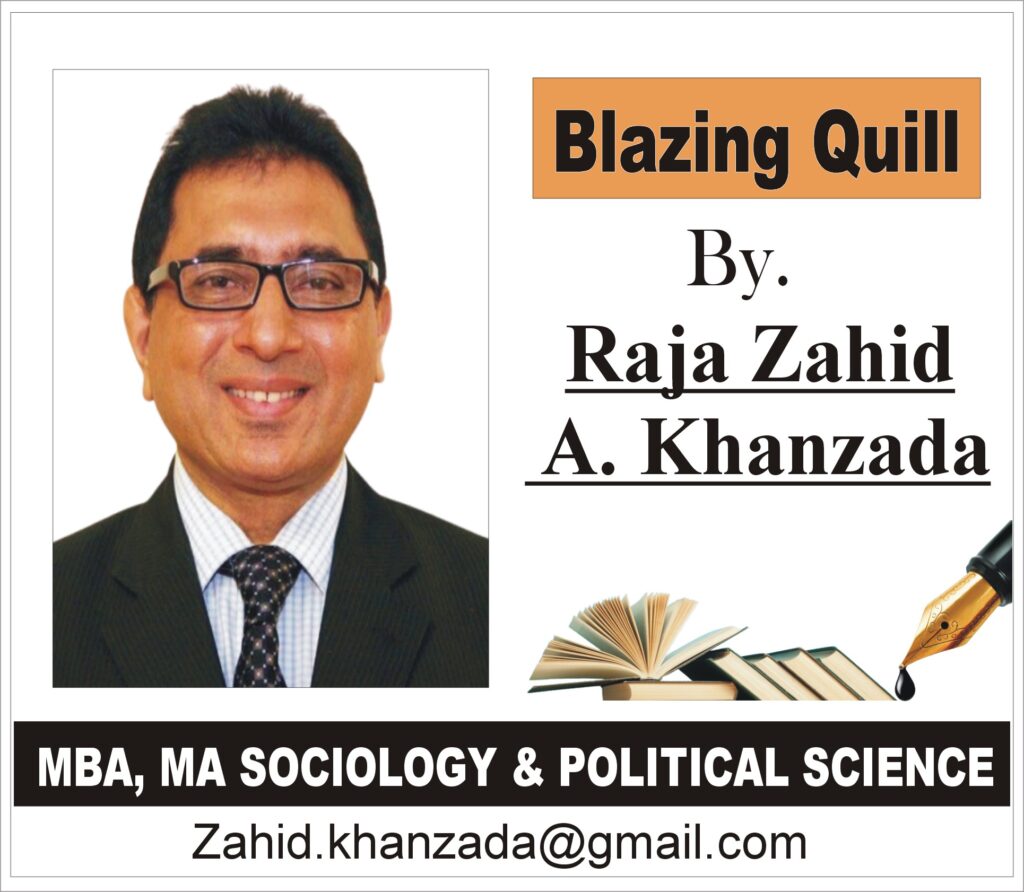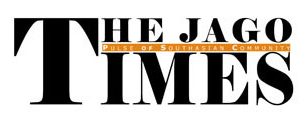The Echo of Pakistan in the Corridors of Washington!
By Raja Zahid Akhtar Khanzada
Between the darkness of night and the light of day, another moment was etched onto the canvas of history.
In the cool winds of Washington D.C., the red carpet laid out at Andrews Air Base bore witness to the fact that the Prime Minister of Pakistan was not merely a visiting guest, but the representative of a state that had reached the very center of global power the place where decisions are made, and maps of the world are redrawn.
As Prime Minister Shehbaz Sharif descended from his official aircraft, he was greeted warmly by officers of the United States Air Force. Every moment of the reception was lined with strict protocol and security measures as he was escorted toward the White House.
Accompanying him was Pakistan’s Field Marshal Syed Asim Munir, who just months earlier had attended a luncheon at this very building with President Donald Trump.
With this convoy waved not just the green and white flag of Pakistan, but also the hopes of a nation that has always strived to secure its rightful place on the global stage.
1600 Pennsylvania Avenue the address of the world’s most powerful chair, a chair occupied by not merely the President of the United States, but the pivot around which global politics revolve.
Within the gilded walls of the Oval Office, this crucial meeting was set to take place.
President Trump, with his characteristic boldness and commanding tone, sat face-to-face with Prime Minister Shehbaz Sharif, known for his dynamism and quick political maneuvering.
Everyone in the room understood that this was no ordinary encounter; this was a meeting that could shape the trajectory of history.
During the press interaction, President Trump expressed his disappointment over the ongoing war in Ukraine and the stance of Russian President Vladimir Putin. His voice carried both exhaustion and pride exhaustion from a protracted conflict that had gripped the world, and pride in having successfully prevented seven potential wars during his presidency.
Then, almost abruptly, he shifted gears and spoke about the meeting about to take place:
“We have a great leader coming the Prime Minister of Pakistan and the Field Marshal. The Field Marshal is a remarkable man, and so is the Prime Minister.”
It was as though the pages of history were turning before the eyes of those present.
With a knowing smile, Trump admitted to the delay, saying,
“They’re coming, and they may already be in this room… I don’t know, because we’re running late.”
These words were not merely casual remarks; they were reflections of the intricate game of power whose threads are woven across the capitals of the world.
President Trump had been delayed by his prior engagements signing a memorandum on domestic political violence and addressing the media.
The images released later told their own silent story: Shehbaz Sharif and Field Marshal Asim Munir seated calmly on the gilded furniture of the Oval Office, as though two historic figures patiently awaited the opening of a new chapter.
Then Secretary of State Marco Rubio entered the room, greeting both leaders warmly.
Soon came the moment when President Trump posed for a photograph with his signature thumbs-up—a photo that captured not just smiles, but the deeply layered narrative of diplomacy concealed behind them.
The meeting lasted for approximately ninety minutes, unusually held behind closed doors with no press allowed—an atypical move for Trump, who generally enjoys photo opportunities.
This veil of secrecy added a layer of intrigue and significance to the discussions that followed.
Sources close to the matter revealed that the agenda included the bloody situation in Gaza and Pakistan’s possible role in a United Nations peacekeeping force there, the rising tensions with India, a defense pact between Pakistan and Saudi Arabia, increasing cooperation in mining and cryptocurrency, and the contours of a broader framework akin to the Abraham Accords.
These topics elevated the encounter far beyond a ceremonial photo op, turning it into a genuine center of decision-making.
Trump, ever conscious of his legacy, is determined to be remembered as a peacemaker.
Following his claims of diffusing the escalating crisis between India and Pakistan in May, he has accelerated his informal campaign for the Nobel Peace Prize.
Pakistan publicly praised his efforts, while India’s categorical denial placed the White House in a precarious position.
As Trump himself often says, he is a dealmaker, and in this room, Shehbaz and Asim sought to demonstrate that Pakistan was a reliable partner worth investing in.
Critics are quick to remind that with the powerful, both friendship and enmity carry dangers, a truth echoed by wise men for centuries.
Today, Trump is the same man who, during his first presidency, welcomed Imran Khan to the White House.
Back then, Khan arrived with General Bajwa, the army chief, in uniform.
But the world has shifted since that day Imran Khan now sits behind prison bars, and the dreams and expectations once tied to him and his party are slowly fading into disillusionment.
This is not just a story of the present moment.
Once, generals would visit the White House in uniform; today, they arrive in tailored suits.
Once, decisions were made behind the curtain; today, the same players sit openly at the table.
This scene is more than a photograph it is a reflection of power’s evolution and the changing temperament of politics.
It is particularly notable that during former President Biden’s tenure, U.S.-Pakistan relations languished in a state of cold indifference. Not once did Biden pick up the phone to speak directly with a Pakistani prime minister.
Thus, for the first time since 2019, Pakistan’s head of government was formally received with full protocol at the Oval Office.
For Islamabad, this meeting signaled that despite America’s deepening ties with India, Pakistan still remains part of Washington’s strategic calculus.
For Trump, it was an opportunity to showcase himself as the world’s indispensable mediator.
The meeting wasn’t solely about politics it was also an economic milestone.
Since Trump assumed office in January, Pakistan-U.S. relations have accelerated in the sectors of minerals and cryptocurrency.
Earlier this month, Pakistan signed a $500 million agreement with U.S. Strategic Metals, an event celebrated by U.S. Charge d’Affaires Natalie Baker as a sign of strengthening bilateral ties.
In April, Pakistan Crypto Council (PCC) partnered with World Liberty Financial (WLF), a platform backed by Trump-aligned investors.
Before arriving in Washington, Prime Minister Shehbaz Sharif had been in New York for the United Nations General Assembly, where he met with global figures including Bill Gates and Muhammad Yunus.
With Gates, he expressed gratitude for assistance during the catastrophic floods of 2022 and 2025, and they discussed public health initiatives and efforts to eradicate polio.
His conversation with Yunus focused on Pakistan-Bangladesh relations, regional connectivity, and trade.
Yet amid all these engagements, the defining image remained the one taken under the shadow of the White House’s iconic white walls—
An image that was not just a moment frozen in time, but a symbol of an entire era.
Where once the dreams of democracy and the cries for freedom echoed, today the iron grip of power politics has taken root.
The photograph represents not merely three individuals standing together, but three systems colliding:
American interests, the Pakistani establishment, and the people of Pakistan forever relegated to the role of spectators in this high-stakes game.
The smiles may be fleeting, the handshakes temporary, but the story behind them raises questions that will echo for centuries.
Is this image a testament to the triumph of power, or an epitaph for democracy?
From the red carpet of Andrews Air Base to the golden furniture of the Oval Office, this journey served as a symbolic reminder to Pakistan—
In the arena of global powers, carving out a place is never easy, but it is never impossible.
Under the skies of Washington, this moment was inscribed into history,
Where smiles became reflections, and questions etched themselves onto the forehead of tomorrow.
—————————————————
Note: Raja Zahid Akhtar Khanzada is a senior journalist with over four decades of experience in print and digital media. He is affiliated with one of Pakistan’s leading media groups and serves as the Editor-in-Chief of Jago Times, a prominent bilingual publication based in the United States with a wide international readership.
Over the years, he has written extensively on geopolitics, diplomacy, human rights, and diaspora affairs, providing in-depth analysis of South Asian and global political developments. His work reflects a unique perspective shaped by years of reporting from the ground and covering high-level events, including United Nations sessions and White House meetings.
Raja Zahid has contributed to some of Pakistan’s most respected top media outlets, and is widely recognized for his fearless journalism and sharp commentary. His writings continue to bridge audiences across continents, making him a trusted voice on international relations and current affairs.



